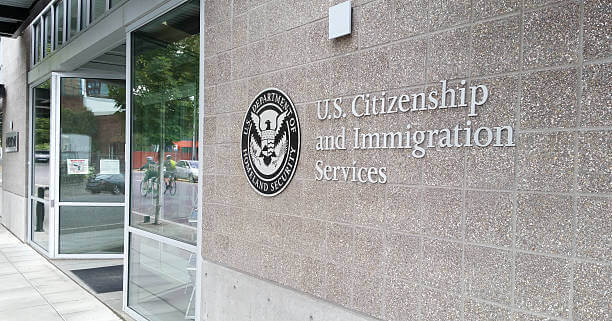It is no news that asylum is a sensitive issue and practically a state policy that has been maintained for many years in the country. Each year, thousands of people seek asylum in the United States because of persecution based on race, religion, nationality, or membership in a social or political group.
On the other hand, President Biden’s latest measures and reforms resulting from the immigration surge at the southern border have put asylum claims at the center of the storm, with families being separated by failures in the CBP One application and asylum interview reforms.
Therefore, in Jaskot Law we explain what it is and how to apply for asylum in the United States.
What is asylum in the United States?
Both asylee and refugee status are defined according to the Immigration and Nationality Act (INA), which qualifies as such any person “who is unable or unwilling to return to his or her country of origin”. [a su país de origen] and is unable or unwilling to avail himself or herself of the protection of that country because of persecution or a well-founded fear of persecution on account of race, religion, nationality or membership of a particular social group or political opinion”.

However, refugee status is not the same as asylum seeker status in the United States, since a person wishing to apply for refugee status must apply from outside the country, while those seeking asylum in the United States can be processed within the country or at any of its ports of entry..
Types of asylum in the United States
While formally speaking there is no formal difference between types of asylees, such as political asylum or asylum, there are two types of asylum in the United States:
- Affirmative asylum: Applies to asylum seekers who do not face any type of removal proceedings.
- Defensive asylum: If the U.S. Citizenship and Immigration Services (USCIS) does not grant asylum, the applicant will face removal proceedings. In these cases, the applicant may file a new asylum application through the defensive asylum process, during which he or she must appear before an immigration judge.
How to apply for asylum in the United States?
The process for applying for asylum in the United States is as follows:
Presentation of the asylum application
Make an application for asylum by filing Form I-589 (Application for Asylum and for Withholding of Removal).
Record check
Submit to a fingerprinting and criminal record check by the authorities.
USCIS Notification
Wait for USCIS to send a notice to the applicant to conduct the asylum interview.
Asylum interview
Appear for an asylum interview along with your family members seeking asylum benefits in the United States (spouse and/or children).
Once the interview is completed, an asylum officer will determine your eligibility and his or her decision must then be reviewed by a supervising officer. Generally, this process takes about two weeks, although you should be aware that there may be significant delays due to the number of applicants.
According to the INA, USCIS will make a decision on your asylum application within 180 days from the date your application is filed, unless there are circumstances that delay the process.
Please also note that you should carefully complete and review the Form I-589, as USCIS will reject any Form that does not provide an explanation of why you are seeking asylum or does not include any attachments referenced in your application.
For all these reasons, the process of applying for asylum in the United States is extremely complex and can be complicated. Therefore, it is always advisable to seek professional legal help to assist you in the process of applying for asylum in the United States.
At Jaskot Law we can help you. Contact us at +1 (410) 235-6868 or via [email protected].
Where to apply for asylum in the United States?
To apply for affirmative asylum you must be present in the United States and, while you can apply for asylee status regardless of how you entered the country, you must do so within one year of your arrival. However, an exception may be made if you show that the delay was due to extraordinary circumstances or because there was a change that significantly affected your eligibility.
These exceptional circumstances are already defined by the INA, but it is always advisable to consult with an attorney who can determine whether or not you qualify for one of these exceptions.

On the other hand, if you have an immigrant registration number, also known as an “A Number” (which begins with the letter “A” followed by eight or nine digits), you must follow these steps before submitting your application. You can find your printed number on any communication you have received from the U.S. Department of Homeland Security (DHS) or the Executive Office of Immigration Review (EOIR).
If the EOIR helpline or online system has information about your name and the date of your next hearing, it means that your case has already been filed and you should send your Form I-589 application directly to EOIR. The same help lines will provide you with the address of the immigration court where you should send your application. You can also find this information on the Department of Justice website.
Please note that if you send your Form I-589 application to any location other than the immigration court indicated by the helpline or the EOIR electronic system, your application will be rejected and you will receive a notification with the correct address.
If you have not been assigned an A Number or if the EOIR helpline or electronic EOIR system indicates that it does not match any record in the system, you should send your Form I-589 application to USCIS.

Below is a table with the information you need to know where to send your Form I-589 application to USCIS. Please note that if you submit your Form I-589 application to EOIR and the court has no record of your A-Number, your application will be rejected and returned.
| If you live in… | You must submit your application at… |
| Alabama, Arkansas, Colorado, North Carolina, South Carolina, Columbia, District of Columbia, Florida, Georgia, U.S. Virgin Islands, Louisiana, Maryland, Missississippi, New Mexico, Oklahoma, Puerto Rico, Tennessee, Texas, Utah, Virginia, West Virginia, Wyoming, Western Pennsylvania, in Allegheny, Armstrong, Beaver, Bedford, Blair, Bradford, Butler, Cambria, Clarion, Clearfield, Crawford, Elk, Erie, Fayette, Forest, Greene, Indiana, Jefferson, Lawrence, McKean, Mercer, Somerset, Venango, Warren, Washington and Westmoreland counties. | USCIS Texas Service Center U.S. Postal Service (USPS), FedEx, UPS, or DHL:USCIS TSCAttn: I-5896046 N Belt Line Rd. Ste. 589Irving, TX 75038-0018 |
| Arizona, California Imperial counties, Los Angeles, Orange, Riverside, San Bernardino, San Bernardino, San Diego, Santa Barbara, San Luis Obispo or Ventura counties, Connecticut, Delaware, Guam, Hawaii, Maine, Massachusetts, Nevada (Clark, Esmeralda, Nye, or Lincoln counties), New Hampshire, New Jersey, New York, Pennsylvania (in counties not listed above), Rhode Island, Vermont | USCIS Service Center in California U.S. Postal Service (USPS):USCIS California Service CenterP.O. Box 10881Laguna Niguel, CA 92607-0881 FedEx, UPS or DHL:USCIS California Service CenterAttn: I-58924000 Avila Rd.2nd Floor, Room 2312Laguna Nigue |
| Alaska, California (counties not listed above), North Dakota, South Dakota, Idaho, Illinois, Indiana, Iowa, Kansas, Kentucky, Michigan, Minnesota, Missouri, Montana ,Nebraska, Nevada (counties not listed above), Ohio, Oregon, Washington, Wisconsin | USCIS Nebraska Service Center U.S. Postal Service (USPS):USCIS Nebraska Service CenterP.O. Box 87589Lincoln, NE 68501-7589 FedEx, UPS or DHL:USCIS Nebraska Service CenterAttn: I-589850 S St.Lincoln, NE 68508 |
For more information, you can call the automated toll-free line in the United States at 800-898-7189 (TDD 800-828-1120) or 304-625-2050 (local call charges may apply), or check the EOIR Automated Case Information system.
Conclusion
In short, asylum is a sensitive issue and state policy in the United States, and every year thousands of people apply for asylum due to persecution based on race, religion, nationality, or membership in a social or political group.
President Biden’s recent reforms have put asylum claims in the public spotlight. To apply for asylum in the United States, applicants must complete Form I-589, undergo a background check and an asylum interview.
There are two types of asylum, affirmative and defensive, and applicants must file within one year of arrival unless your case fits one of the exceptional conditions that will justify not filing within this time frame.
On the other hand, the process of applying for asylum in the United States can be overwhelming and complex for any migrant arriving in the country after conditions of persecution. Therefore, it is advisable to seek the help of an immigration attorney who can guide and advise you through the process.
At Jaskot Law we are here to help you make your asylum application in the safest way possible. Contact us at +1 (410) 235-6868 or via [email protected].
Sources
United States Citizenship and Immigration Services – USCIS.
CNN.
FAQs
What is asylum in the United States?
Asylum is a legal status granted to persons who have been persecuted or fear persecution in their country of origin because of race, religion, nationality, political opinion or membership in a particular social group. Asylum may be processed within the United States or at its ports of entry.
What are the types of asylum in the United States?
There are two types of asylum in the United States: affirmative asylum and defensive asylum. Affirmative asylum applies to asylum seekers who do not face any removal proceedings, while defensive asylum applies when USCIS does not grant asylum and the applicant faces removal proceedings.
How to apply for asylum in the United States?
To apply for asylum in the United States, you must file Form I-589 (Application for Asylum and for Withholding of Removal). You must also submit to a fingerprinting and background check by the authorities, wait for a notification from USCIS to conduct the asylum interview, appear for the interview with your family members, and wait for the decision of an asylum officer.
Where can I apply for asylum in the United States?
To apply for affirmative asylum, you must be present in the United States and do so within one year of your arrival. If you show that the delay was due to extraordinary circumstances or because there was a change that significantly affected your eligibility, an exception may be made.
Why is it advisable to seek legal assistance in the asylum application process?
The asylum application process can be complicated and it is very important that it is done properly. It is advisable to seek legal assistance from a professional to guide you through the process, especially in the filing of the Form I-589, which must be filled out carefully and without errors. At Jaskot Law we can help you through the entire process of applying for asylum in the United States.
Theodora Carbel stands out as a content creator specializing in the Latino market, taking advantage of her deep knowledge in the field. Her academic background in Sociocultural Anthropology, and her extensive experience in Copywriting focused on U.S. immigration law, have been the foundations to her professional development.


